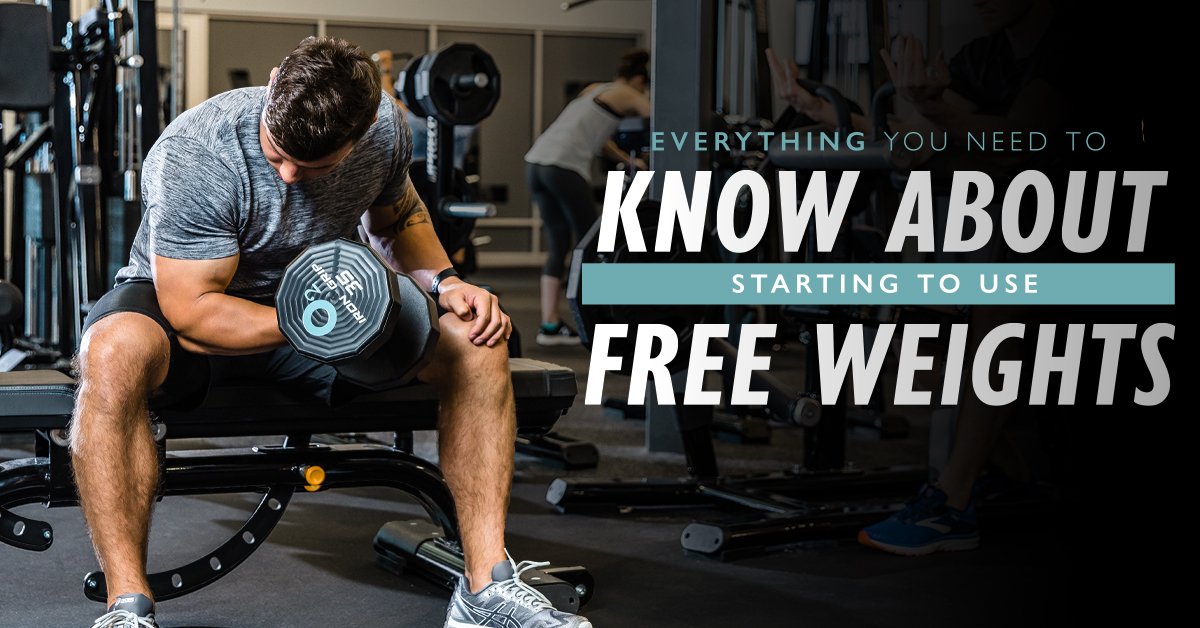Starting your weightlifting journey can be an empowering and transformative experience! The free weights are some of the most versatile tools that can help you build strength, improve muscle definition, and boost your overall fitness.
But if you wander into the free weight area without a plan or some information on how to start, you could risk making a mistake that could lead to injury.
That's why we're here to help teach you everything you need to know about starting to safely and effectively add free weights to your workout routine!
Understanding The Basics
Before you step into the weight room, it's important to familiarize yourself with the basics of free weights and the benefits!
First, the "free weight" section typically includes dumbbells, barbells, and kettlebells. There's a lot of unique terminology the weight room uses during workouts, so check out this Gym Term Cheat Sheet we made to help you understand!
Using free weights versus machines allows you to exercise with a greater range of motion while engaging your stabilizing muscle groups, making lifting free weights a perfect choice for creating a well-rounded workout!
Prioritize Proper Form & Technique
The most important part of weightlifting will always be proper form.
Use bodyweight exercises to help build the necessary strength and properly prepare your body before your first weightlifting session. Once you're ready, start with lighter weights and master the movements and technique before adding weights.
Remember: Keep your core engaged, maintain a neutral spine, and move the weight with control!
Start Light and Gradually Progress
Whether it's the first time you're lifting this week or ever, you should always start light and work your way up in weight. You may be surprised with how heavy the weight feels for one exercise versus another (even the weight lifting pros start with a light weight to warm up!)
For beginners, we suggest starting with a weight that's light enough for you to complete three sets of 10-12 repetitions with proper form. As you gain strength, gradually increase the weight to continue challenging your muscles.
Compound vs. Isolation Exercises
To create an effective, balanced weightlifting routine, it's important to know the difference between compound and isolation exercises.
Compound exercises engage multiple muscle groups all at once, like squats or deadlifts. Isolation Exercises focus on a single muscle group or joint, like bicep curls or tricep extensions.
Refresh your knowledge with our Gym Term Cheat Sheet!
Tracking Your Progress
We recommend keeping a workout journal or using a fitness app that can help you track your progress on your own. You'll want to record the exercises, sets, reps, and weights you used. This allows you to monitor your improvements and helps you plan future workouts!
Rest and Recovery After Lifting
Listen to your body – rest a full day if you're constantly sore or plateauing. Active recovery targets specific areas that need help after intense workouts. Rest and active recovery days are both crucial for your body's recovery, so whatever you do - don't skip them!
Click here to read "Rest vs. Active Recovery" for a more in-depth explanation of what they are and which one to do from Damien O'Sullivan, a Renew Physiotherapist.
In Conclusion...
Using free weights can be a really exciting step towards achieving your fitness goals! By focusing on proper form, gradually increasing weight, and incorporating a variety of exercises, you'll steadily progress and grow stronger.
Consistency and patience are key, so stay committed to your routine! Happy LIfting!











.jpeg)
.jpg)